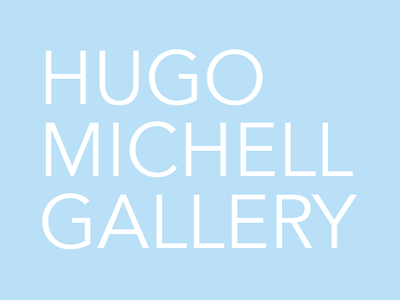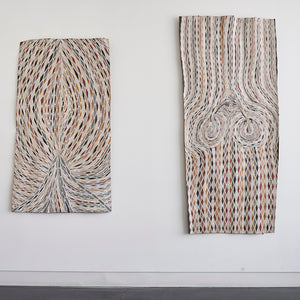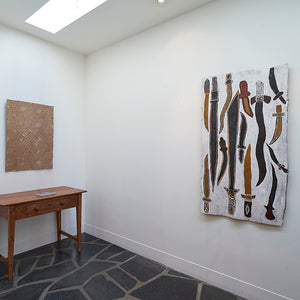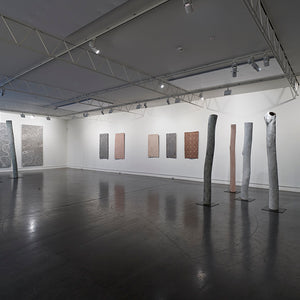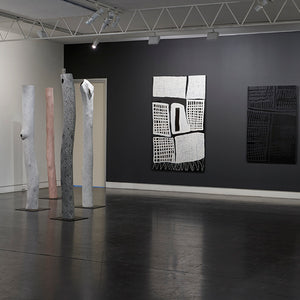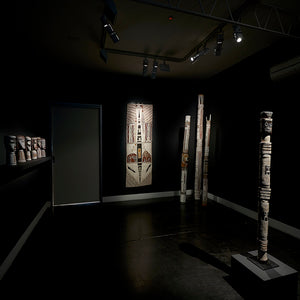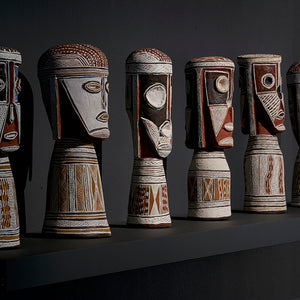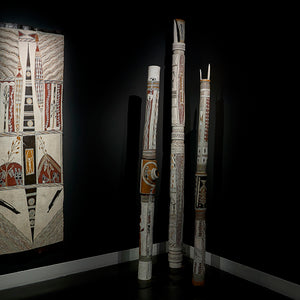Various Artists MITJI - THE GROUP
26 September to 26 October 2019
' Miṯtji - The Group' by Will Stubbs
Gunybi Ganambarr | Manini Gumana | Malaluba Gumana | Djambawa Marawili AM | Noŋgirrŋa Marawili | Dhuwarrwarr Marika | Baluka Maymuru | Garawan Waṉambi | Nyapanyapa Yunupiŋu
Miṯtji is a word which means a group (of people), family, tribe, mob, crowd.
One of the ways that it is used is in the context of a ceremony where different songlines converge carried in by different clans. Like schools of fish circling into the ceremony ground. The power behind these identities is autonomous owing nothing to the other groups who are driven by their own sacred forces.
It is quite surprising for an outsider to see a group of songmen with their affiliated clan members commence a song cycle only metres away from a different group who are already in full flight. Each group is oblivious to the other because they are not putting on a performance for the living audience bit channelling ancestral spirit which follows its own imperative.
Musically this is startling – sometimes cacophonous, sometimes sublime. Improbable counterpoint and avant-garde rhythms set themselves up and then disappear again as the synchronization evaporates.
The Marrakulu clan’s own songline describes themselves as schools of mullet swimming in to the ceremony. A miṯtji of ancestral spirits manifest as fish. They are miṯtjimirri. Schooled up in groups.
And that is what this show is about. A school. A school of artists. It is about the energy and dynamics which can arise when a group of artists radiate around a common place in a shared time period. This phenomenon is well understood and acknowledged in Western art theory but is rarely attributed to an Indigenous art movement.
But this is one way to better understand the art from North east Arnhem. A group of artists have been present when each other has pushed boundaries and conventions. They have not aped or copied the other but been inspired to innovate and deepen their practice through the osmotic effect of familiarity.
The algebra of how artists can influence each other and magnetically excite each other without copying a particular technique or style is well accepted. This exhibition invites the viewer to apply that analysis outside the European field. And to glance at these works made by a tiny group if artists who have revolutionized Yolŋu artmaking through their collective the Buku-Larrŋgay Mulka Centre over the last twenty years.
